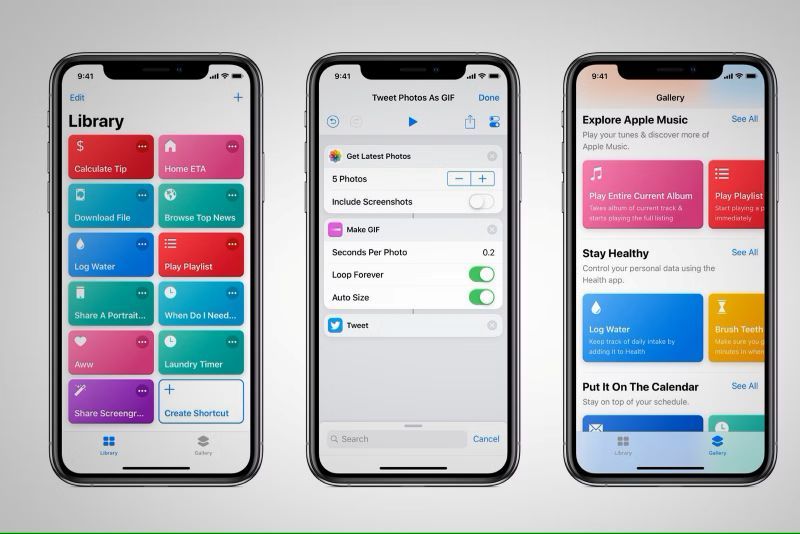

Siri Shortcuts have revolutionized the way iPhone users interact with their devices, offering unprecedented levels of automation and customization. Let's explore this topic in more detail with Tiny Fishing below, a popular game that exemplifies how Siri Shortcuts can enhance even our leisure activities. As we delve into the world of Siri Shortcuts, we'll uncover how this powerful feature can streamline your daily tasks, boost productivity, and unlock hidden potential in your iPhone. Whether you're a tech enthusiast, a busy professional, or simply looking to make the most of your device, mastering Siri Shortcuts will transform your iPhone experience.
Siri Shortcuts is a powerful automation feature introduced by Apple that allows users to create custom voice commands and automate complex tasks on their iPhones. This innovative tool has quickly become a favorite among tech-savvy users and productivity enthusiasts alike. At its core, Siri Shortcuts leverages the capabilities of various apps and iOS functions to create streamlined processes that can be triggered with a simple voice command or tap.
The beauty of Siri Shortcuts lies in its versatility. Users can create shortcuts for a wide range of activities, from simple tasks like sending a message to a specific contact, to more complex operations like generating reports from multiple apps. The system works by chaining together a series of actions that would typically require multiple steps, condensing them into a single, easily executable command.
To get started with Siri Shortcuts, users need to familiarize themselves with the Shortcuts app, which comes pre-installed on iPhones running iOS 12 or later. This app serves as the central hub for creating, editing, and managing shortcuts. Within the app, users can browse a gallery of pre-made shortcuts or create their own from scratch using a simple, drag-and-drop interface.
One of the key advantages of Siri Shortcuts is its integration with third-party apps. Many popular apps have embraced this feature, allowing users to incorporate app-specific actions into their shortcuts. This means you can create workflows that seamlessly blend actions from different apps, truly personalizing your iPhone experience to suit your unique needs and preferences.
Read more: How to Use iPhone Focus Mode to Stay Productive
Creating your first Siri Shortcut might seem daunting, but it's actually a straightforward process that becomes intuitive with practice. To begin, open the Shortcuts app on your iPhone. You'll be greeted with a clean interface that invites exploration. The "Gallery" tab showcases a variety of pre-made shortcuts that you can add to your collection with a single tap. These serve as excellent examples and starting points for understanding the potential of Siri Shortcuts.
To create a custom shortcut, tap the "+" icon in the top right corner of the app. This will open the shortcut editor, where you can start building your automation. The left side of the screen displays a list of available actions, categorized by app or function. To add an action to your shortcut, simply drag it from this list into the main workflow area.
Let's create a simple shortcut as an example. Suppose you want to create a shortcut that opens your favorite music playlist and starts playing it. Here's how you might do it:
1. In the shortcut editor, search for "Apple Music" in the action list.
2. Drag the "Play Music" action into your workflow.
3. Tap on the action to configure it. You can choose a specific playlist, album, or genre.
4. Once configured, tap "Done" to save your shortcut.
You can now name your shortcut and assign a voice command to trigger it with Siri. For instance, you might name it "Play My Jams" and set the Siri phrase to "Hey Siri, play my jams." From now on, whenever you use this phrase, Siri will automatically open Apple Music and start playing your chosen playlist.
This is just a simple example, but it illustrates the basic process of creating a Siri Shortcut. As you become more comfortable with the system, you can create increasingly complex shortcuts that combine multiple actions across different apps and system functions.
Once you've mastered the basics of Siri Shortcuts, it's time to explore some more advanced techniques that can truly unlock the power of this feature. These advanced shortcuts can save you significant time and effort by automating complex sequences of actions that you perform regularly.
One powerful technique is the use of variables in your shortcuts. Variables allow your shortcuts to be more dynamic and adaptable. For instance, you could create a shortcut that takes the current weather conditions as a variable and suggests appropriate activities or clothing choices based on that information. To use variables, look for the "Magic Variable" option when editing your shortcut. This allows you to pass information between different actions in your shortcut.
Another advanced feature is the ability to create shortcuts that run automatically based on certain triggers. These are called "Automation" in the Shortcuts app. For example, you could create an automation that turns on your favorite playlist when you arrive at the gym, or sends a message to your partner when you leave work. To set up an automation, go to the "Automation" tab in the Shortcuts app and tap the "+" icon to create a new one.
Conditional statements are another powerful tool in creating advanced shortcuts. These allow your shortcuts to make decisions based on certain conditions. For instance, you could create a shortcut that checks your calendar and, if you have a meeting scheduled, it prepares a summary of relevant documents and sends them to your email. To add conditional logic to your shortcuts, look for the "If" action in the shortcut editor.
While the native iOS apps offer a wealth of actions for your shortcuts, integrating third-party apps can expand the possibilities even further. Many popular apps now support Siri Shortcuts, allowing you to incorporate their functions into your automated workflows.
For instance, if you use a task management app like Todoist, you can create shortcuts that add tasks to specific projects or set reminders. If you're a fan of meditation apps like Headspace, you could create a shortcut that starts a guided meditation session and turns on Do Not Disturb mode.
To explore which of your installed apps support Siri Shortcuts, go to Settings > Siri & Search, and scroll down to the list of apps. Apps that support shortcuts will have a "Shortcuts" option. Tapping on this will show you suggested shortcuts for that app, which you can add to your collection or use as inspiration for your own custom shortcuts.
The Shortcuts community is vibrant and creative, with users constantly developing and sharing innovative new shortcuts. Apple provides a gallery of curated shortcuts within the app, but there are also third-party websites and forums dedicated to sharing user-created shortcuts.
To share a shortcut you've created, tap the three dots on the shortcut in the Shortcuts app, then tap "Share." You can choose to share via iCloud link, which allows others to add your shortcut to their own collection. When you find a shared shortcut you want to use, simply tap the iCloud link and choose "Add Shortcut" to add it to your library.
Remember to exercise caution when adding shortcuts from unknown sources, as they can potentially access sensitive information or perform unwanted actions. Always review the actions in a shortcut before adding it to your collection.
Read more: iOS Widgets Tips: Customize Your Home Screen Like a Pro
The true power of Siri Shortcuts lies in its ability to significantly boost your productivity and streamline your daily routines. By automating repetitive tasks and creating custom workflows, you can save time and reduce the cognitive load of managing multiple apps and functions on your iPhone.
One effective strategy is to analyze your daily phone usage and identify tasks that you perform frequently. These are prime candidates for automation with Siri Shortcuts. For instance, if you often find yourself manually adjusting your phone's settings when you arrive at work (turning off Wi-Fi, turning on Do Not Disturb, opening your work email app), you could create a single shortcut that performs all these actions with one command.
Another approach is to create shortcuts for tasks that require multiple steps but are performed infrequently. These might be tasks that you struggle to remember how to do, like resetting your network settings or creating a ZIP file of selected photos. By creating shortcuts for these tasks, you eliminate the need to remember or look up the steps each time.